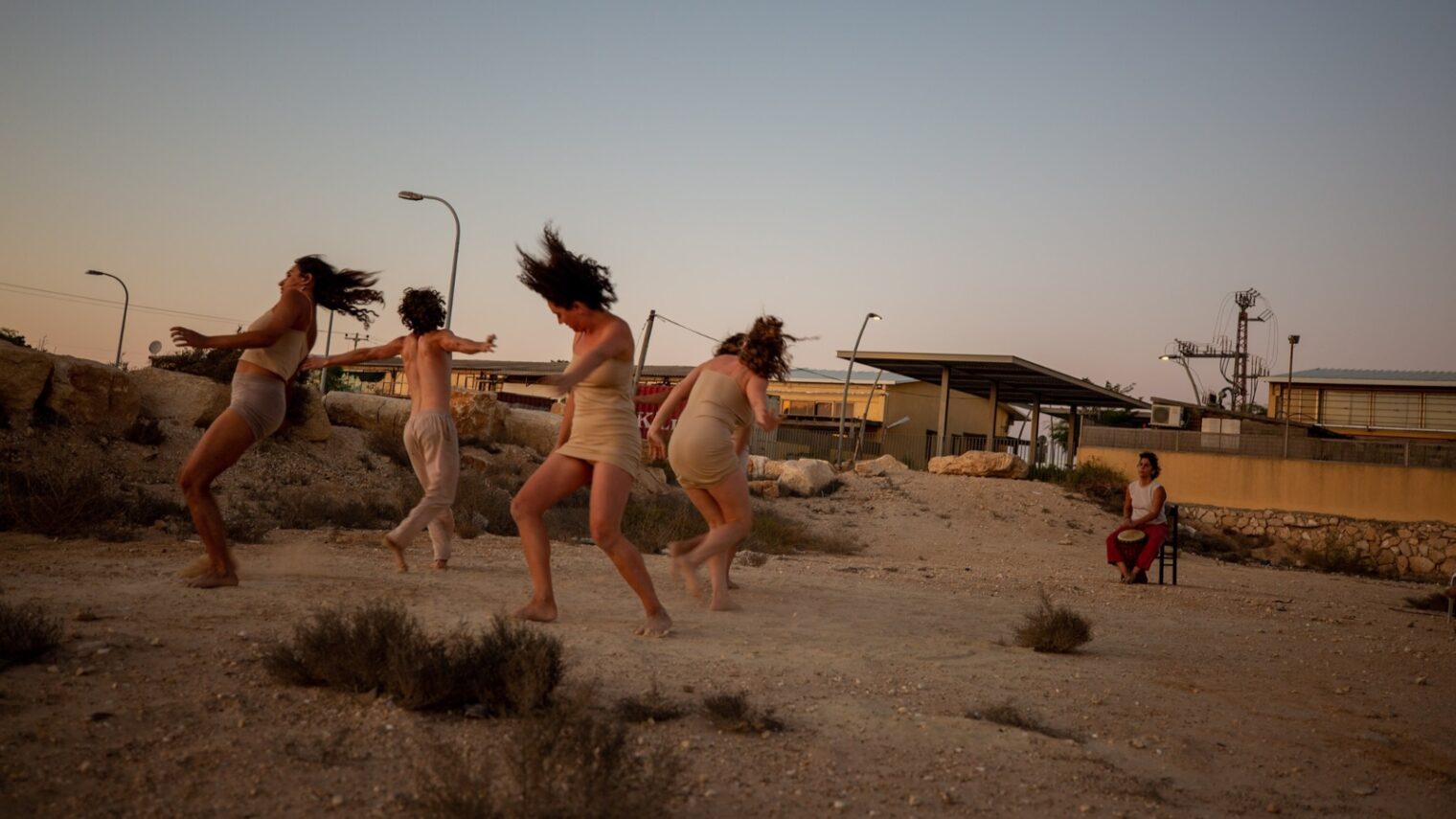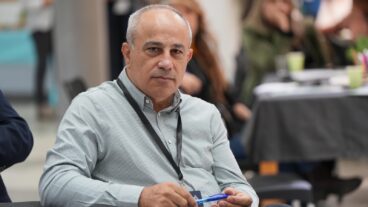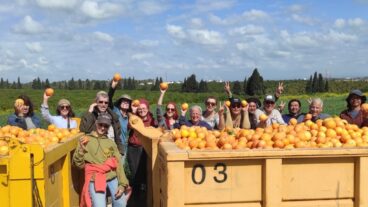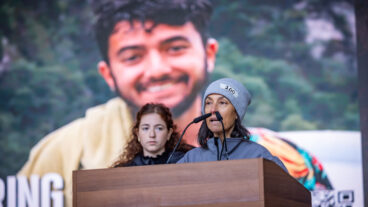With heads angled down, a group in their early 20s walks around each other in slow motion. If this scene sounds strange to you, imagine my thoughts as one of the group members.
While this might sound ominous, it was an interactive dance workshop with instructor Avital Ifargan from Zuzima House of Contemporary Movement in Mitzpeh Ramon in the Negev Desert.
Zuzima is a desert flower commonly found in the Negev. The words zuz or zuzi in Hebrew also mean “move.”
A two-year program established in 2019, Zuzima hosts courses, performances, and residencies for its artists. They work with the raw tools of the bare earth – which involves the movement of time and deep listening.
The program helps participants find a unique personal voice and expand not just their artistic perceptions, but political, social and worldly ones too. Artists develop these skills through sessions taught by contemporary artists who eventually help create ensemble shows.
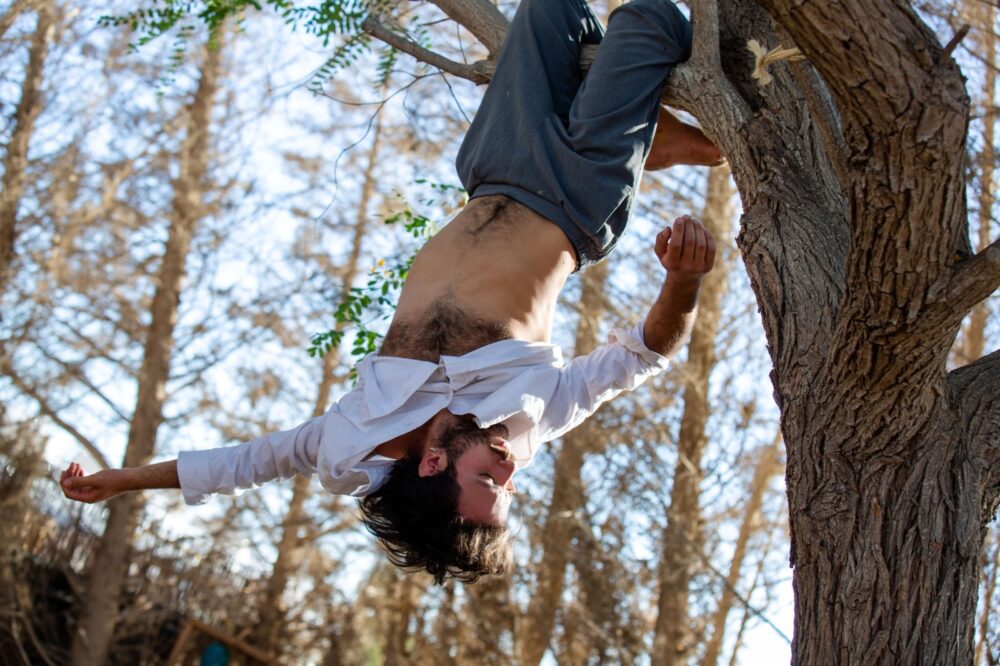
As cofounder and teacher at Zuzima, Ifargan began his artistic journey in martial arts and gradually moved into dance. This crossover of categories is common at Zuzima.
“We are artists who don’t fall into any category, and we bring this to our classes,” said Yaara Perah Reich, cofounder and teacher at Zuzima. “I come from theater but I’m not an actress or a director. I’m all of them – I’ve been a writer, director and actress.”
The art of standing still
Our group consisted of students from the United States, France and England connected to Zuzima through our Onward Israel summer internship program.
Ifargan first asked our group to stand still. Sounds easy, right? Wrong.
“Don’t touch your hair; it looks great. Don’t shuffle your feet; there’s nowhere else to be,” he said. “Stand without doing anything. Just stand.”
Zuzima reimagined the meaning of a task I assumed I would never hear past first grade.
“The void of not doing anything is more complicated than we think. It’s hard to not do anything,” said Perah-Reich.
I had never noticed how often I touch my hair, fiddle my hands, or tap my feet while standing. I now know the difference between standing and standing still.
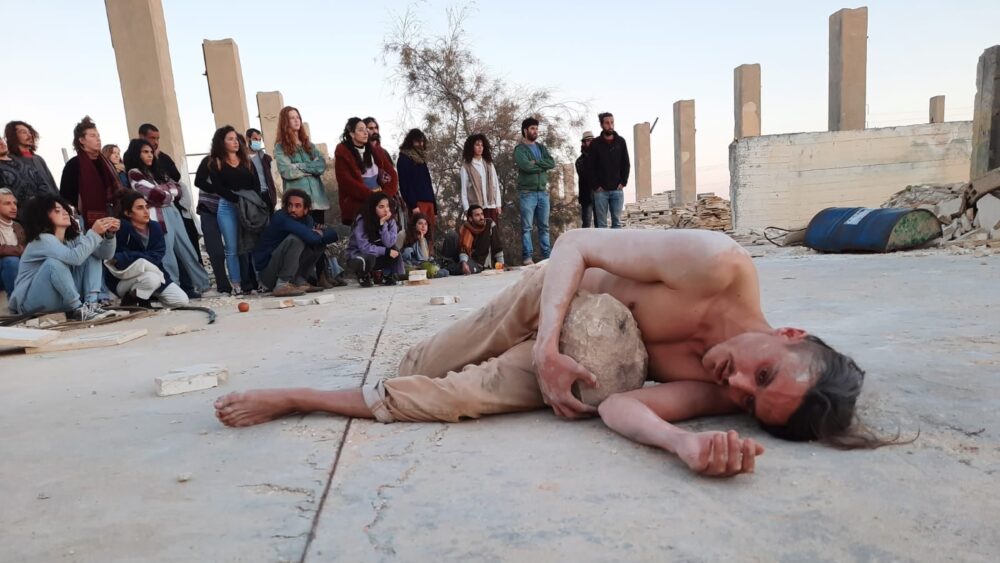
Then we began to walk around the outdoor space. “Keep your head down and do not look up. Start at 1.”
These numbers referred to a walking pace. The group began to walk slowly around one another.
Ifargan changed the pace from 5 (walking with a purpose) to 9 (walking like you’re running late) and back down to 1. I expected to learn dance moves, so the exercise felt odd. Rather than the traditional concept of dance, Zuzima teaches movement.
“We talk about the body and the consciousness as one and not just where the legs should go or what is right and what is wrong,” said Perah-Reich.
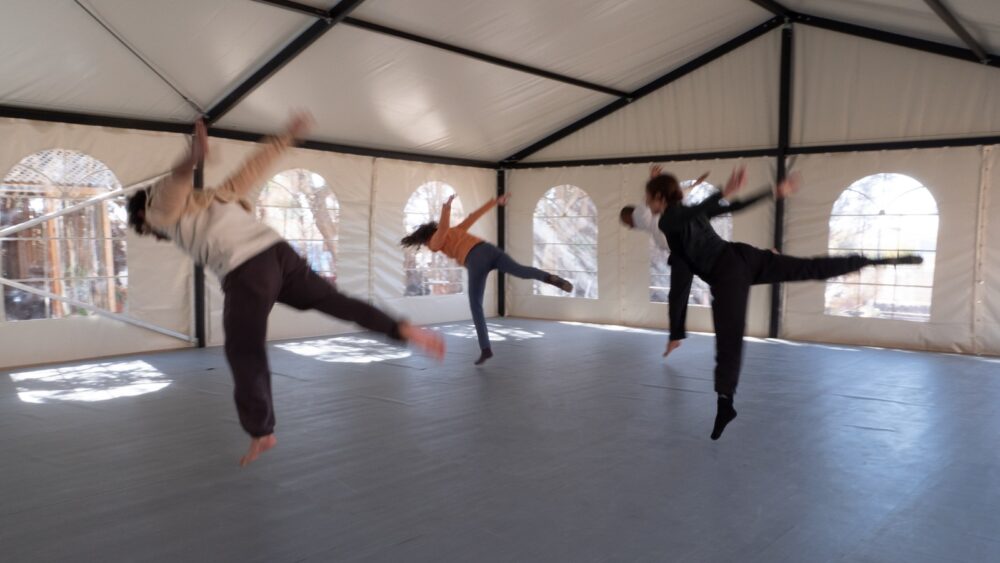
Touching backs
“Continue walking but now close your eyes.”
Murmurs, signs of apprehension, and laughter floated around the air. My immediate thought was how could he expect 30 people to walk around a confined area with trees… and without vision?
For Ifargan, the answer was simple. “If you walk slow enough and keep your arms in front of you, you will not get hurt by anything because everyone will walk just as slow.”
So there, in the middle of the Negev desert, our group walked at a snail’s pace with our eyes closed.
“Find another back,” he then instructed.
Soon enough, my sweaty back met with another back, equally as sweaty. This was not an ideal way to meet someone. With this unknown back leaning against mine, Ifargan instructed us to sit down as a unit, and then stand up without our hands.
My unknown partner and I failed the latter with flying colors.
The simplicity yet the intimacy of the movements was different from anything I could have anticipated.
Intimacy without physical attraction
The closeness between participants also made the group uncomfortable.
It’s difficult for 20-something year-olds to take anything seriously, let alone dancing in the desert, ushering in many moments of muffled laughter.
Ifargan could sense our discomfort.
“These dance moves have nothing to do with my partner. When I touch them it doesn’t mean we’re romantic, it doesn’t mean I like them, it doesn’t mean I hate them. I’m making the motions, nothing more.”
It was difficult for all of us to separate the commonly known connection between physical touching and romance.
Perah-Reich echoed her cofounder’s lesson: “I can be intimate with anyone or anything, even the ground or a stone, and it’s not about sexual attraction or something emotional.”
I’ve always been taught that when two people stand close together or dance, it suggests intimacy or romance. During this workshop, I learned the opposite. Why was it so difficult to separate romance and discomfort from a simple dance class?
According to Perah-Reich, “We are born with body language, and this is an intimate language. But as teenagers, we become more isolated from this intimacy and grow up in more sterile culture.”
Within this culture, as she explained it, physical attachment indicates something sexual or emotional. Zuzima attempts to dismantle these barriers and help participants “gain confidence in our body’s language and ability to trust oneself and whoever we meet.”
A high five
The group’s embarrassment also comes from a cultural difference.
“Israelis always touch each other. We’re less polite and we can be more intrusive into people’s [personal space]. From meeting many groups, I have seen the difference in how foreigners act,” said Perah-Reich.
Social codes also dictate how people interact and react. Codes can form in small gestures like a high five. These codes protect us from facing judgment.
“When I give someone a high five it is telling them we’re cool. You knew if you went back to the bus after the activity the other person wouldn’t gossip about me because we high-fived.”
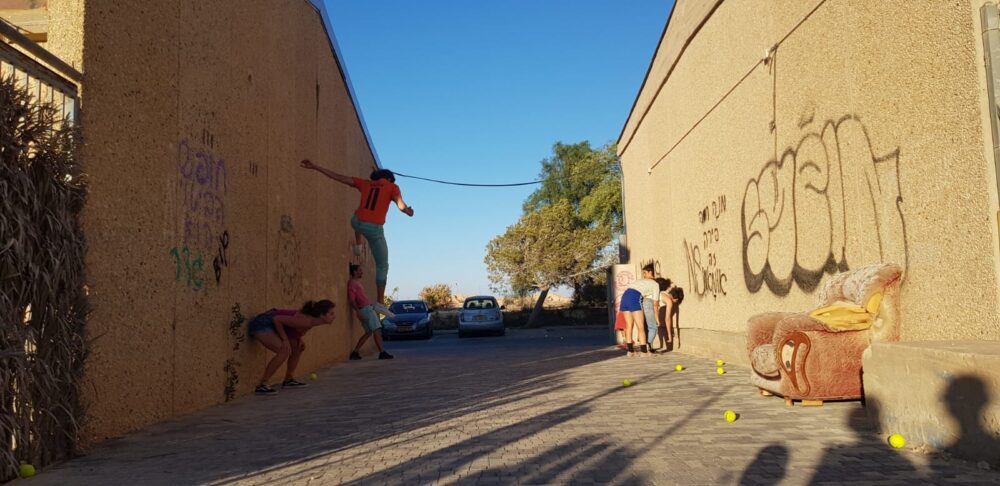
According to Zuzima’s values, the exercises reveal more than walking or leaning against a stranger. Ifargan wanted us to abandon social codes for a moment and live in the present on a basic level.
Intimate movement with strangers is inherently uncomfortable.
“You’re all young, you don’t know each other, and you’re in a foreign country out of your comfort zone,” Perah-Reich acknowledged.
But there must be a place where we can find peace in our bodies, even when others surround us in an uncomfortable situation. There is a way to be alone, even if you aren’t.
Next time you high-five someone, make eye contact, or react to something, ask yourself why? Did I want to smile or was it a force of habit?
My experience at Zuzima taught me that we should take a couple of seconds to look deeper within ourselves to form a consciousness of the world around us and within.




